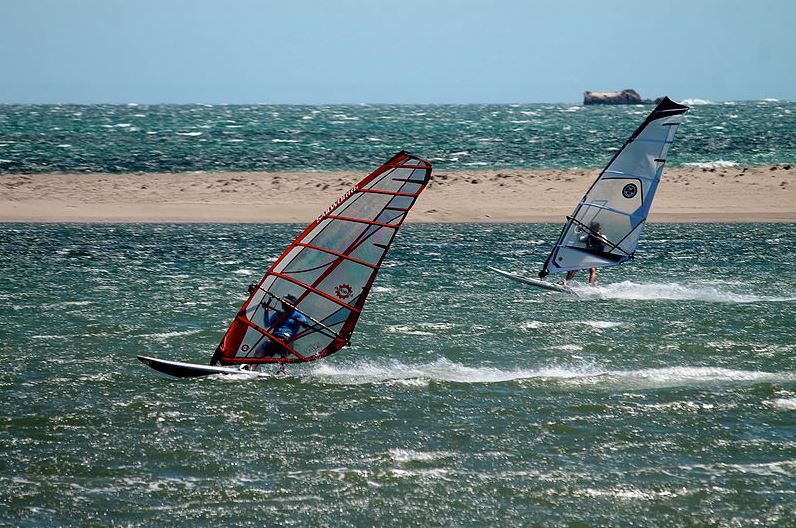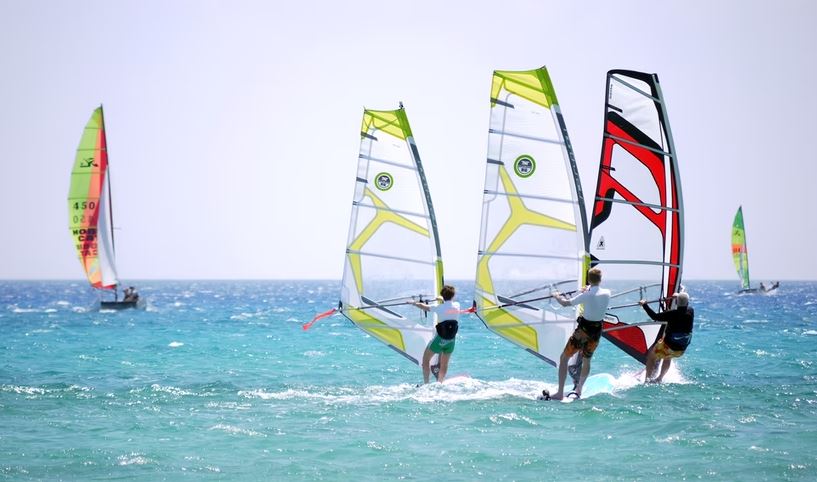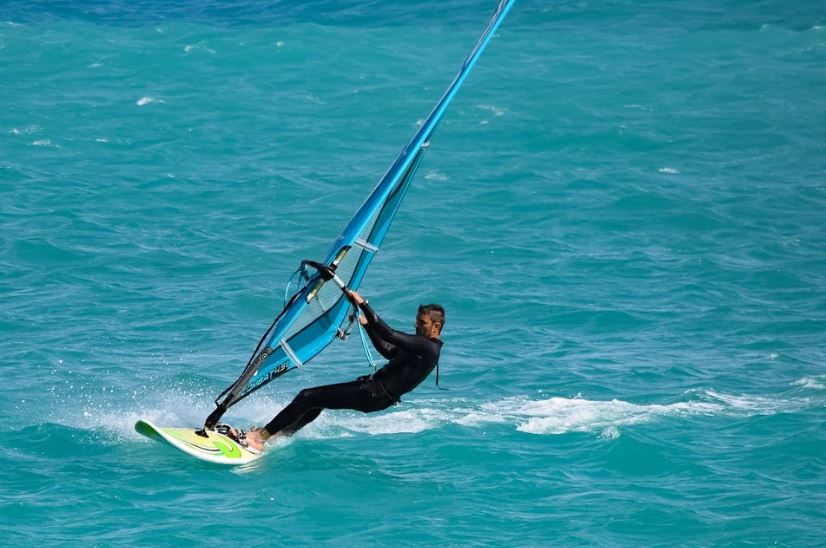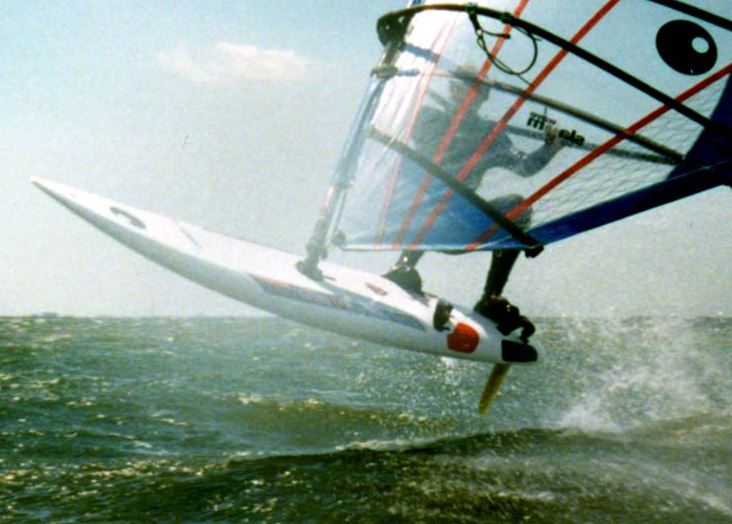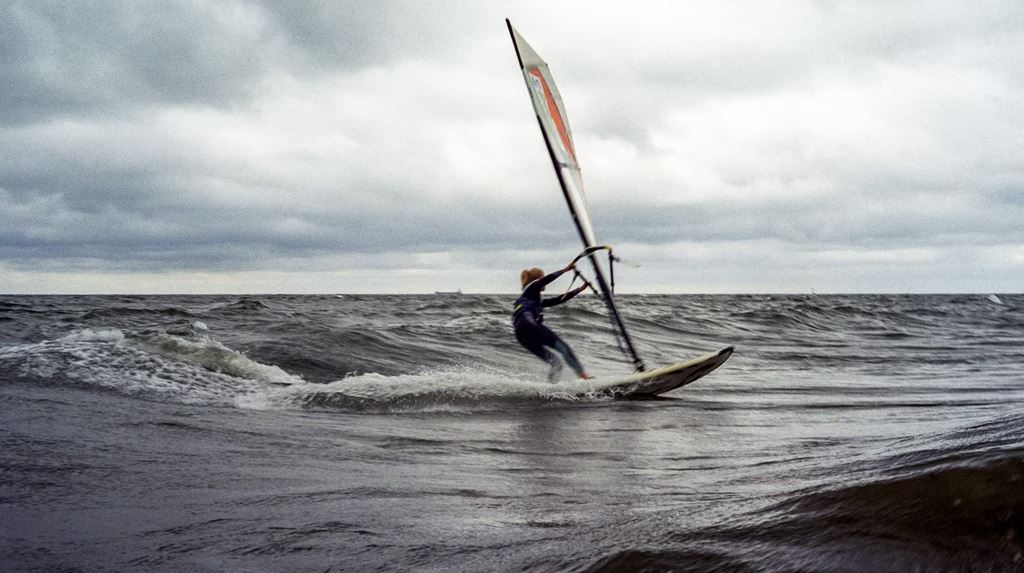Windsurfing – it’s the sport where you glide effortlessly across the water using the wind as propulsion. It’s one of the sports that, when done right, looks so simple. It’s a water sport that combines surfing and sailing, also referred to as sailboarding or boardsailing.
Thinking of taking up windsurfing? It’s an exhilarating sport that you can easily pick up and learn whatever your age or ability is. Windsurfing equipment is light and easy to use, and children as young as six years old and seniors around their 80’s can do it, so it’s suitable for all ages and fitness abilities.
If you are determined, the basics will quickly become second nature, and you will enjoy it. It can be hard to learn at first, and it may come with a learning curve, but you will get it. Here are some tips to help you get started:
Remember: it’s not as complicated as it looks.
The common misconception about windsurfing is that you have to be physically strong, have cat-like agility, and have a strong sense of balance to be able to windsurf. The truth is, if you have an understanding of wind direction, some fitness, and an OK sense of balance, you’re halfway there. If you don’t, that’s okay – you can learn the basics. Like most sports, the more you try, the more you get the hang of it. The more you practice, the better you can become. The progression curve might be steep, but you can pick it up quickly.
Learn from a qualified windsurfing expert.
The best decision you’ll ever make when it comes to learning how to windsurf is not to trust your friend, partner, family, or relative who has the experience but to trust a course of expert windsurfers. You’ll get more from an hour with instructors who are passionate about the sport than the people you know.
It’s not so much about the level of experience, but if you learn from someone you know, you’ll miss experiencing the concept of loyalty from the trainer to the trainee. When we get taught by someone we’re comfortable with, we might be chill, familiar, and tempted to give up when we don’t get it at first, But if we are taught by an instructor, we become better because we are pressured. Plus, you’ll be learning in a group, so you can have other beginners to learn besides with.
Get the right equipment.
Before you get excited and run to the equipment store, we suggest that you continue to rent rather than buy. Practice and learn first using rented equipment since it quickly brings results. The board you buy now may feel super to you today, but the more you master the sport, you may find that you want to replace it tomorrow.
The boards are divided into small, medium, and large. As a beginner, it’s best to start with a large board, as they have more volume and stability. This will help you keep your balance and stay upright. You may also want to use a daggerboard – if the board has an extra skeg, it will help make your first upwind experiences stable.
When it comes to the sail, get the small one. The smaller the wave sail, the easier it will be to control. Get your boom low and adjust it to a level position with your chest. If it’s too high, it will be harder to control.
When it comes to attire, snug rash guards and wetsuits are the best thing to wear. You can always wear swimsuits and even bikinis, but as with most waterboard sports, there’s a risk of a “wardrobe malfunction” when you wear these things because of the winds or pressure from the water.
Know the key terms.
When learning a new sport, you’ll hear quite a few unfamiliar words, and it would sometimes feel like you’re learning a new language. Here are the terms you need to know when windsurfing:
- Deck – the top surface of the board
- Nose – the front and tip of the board
- Tail – the back of the board
- Rail – the edge of the board
- Mast – the upright post to which the sail is attached to, and it supports the front edge of the sail
- Boom – functions as the handlebars; it’s the bar attached to the sail where you hold onto
- Daggerboard – the large, retractable fin in the middle of the board
- Fin – a fin-like structure found at the bottom of the board that provides stability and keeps the board going on a straight line
- Uphaul – the rope that lets you pull the sail out of the water
- Harness – a safety piece of kit that goes around your waist and is then attached to the rig
- Battens – rods that provide shape and strength to the sail
- Offshore – when the wind is blowing directly off the land or shore
- Onshore – when the wind is blowing onto the land or shore
Understand basic wind direction.
If you want to get a head start, understanding basic wind direction is important. The flags on the beach can give you a good indication of where the wind is going. Once you know this, you’ll know the safest way to go. Always have your back to the wind so you can be “pushed” by it, making windsurfing easier.
Once you get the hang of it, you will see that you can windsurf in almost any direction except an area about 45 degrees on either side of the wind direction.
Start with light winds.
Start windsurfing with light winds. It may not look like it’s able to push, but at the same time, you’re not risking yourself with the danger of being swept away by strong winds. Try windsurfing when the wind blows to the shore. In case anything goes wrong, the wind will take you back to the shore.
Position yourself properly.
When windsurfing, get used and be comfortable in the neutral position. When the wind is too strong or too light, the neutral position will keep you secure. Keep your knees bent, and when you twist your hips to the direction you’re going, bend your knees. This won’t consume too much of your energy, and your muscles will be spared.
Keep your back straight, and when you need to pull the sail up, all you need to do is use your legs. Spread your feet apart to maintain balance and increase the stability of your rig.
Relax your muscles. During your first sessions, your body will be tense, and when that happens, get to a neutral position and relax. Try to use your body weight and not the strength of your hands when uphauling and lifting the sail from the water. Otherwise, your hands and arms would get tired too quickly.
Always look ahead.
When windsurfing, always look in the direction you are moving and not down on your feet or the water. If you look upwind, you’ll easily sail upwind. But if you’re looking down, the likelihood is that the rest of your body will follow.
Follow safety measures.
Windsurfing is an autonomous activity, which means you’re responsible for returning to the shore every time. It’s not the same with towed sports, where some safety responsibilities lie on the driver of the boat. Regardless of your skill level, it’s always recommended that you take safety measures since even the most experienced and skilled windsurfer can put themselves into unfortunate situations. Here’s how you can stay safe:
- Never leave far, and don’t stay alone if you’re a beginner. Try windsurfing where there are nearby boats, other windsurfers, and with your instructor.
- Avoid going in the water when there are strong winds.
- Check your equipment carefully and inspect if there are damages to the sail, board, etc.
- Don’t rely on others to bail you out of trouble. Take charge for your own safety.
- Once you learn to do tricks or if you achieved some level of mastery, don’t get caught up easily by trying ambitious moves.
- Stay calm in all situations.
- Keep yourself well-hydrated before and after windsurfing. Eat fruits and drink lots of fluids to make sure you won’t get dehydrated.
Don’t be scared to fall.
In water board sports, remember that falling is learning. As a beginner, you’ll likely fall quite a bit. Balancing on the board and trying to pull up the sail and position yourself while understanding the wind direction can be hard at first. If it doesn’t go well, you’ll be heading for a quick dip!

